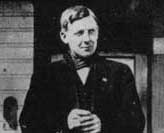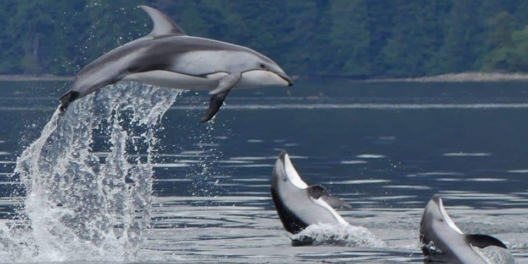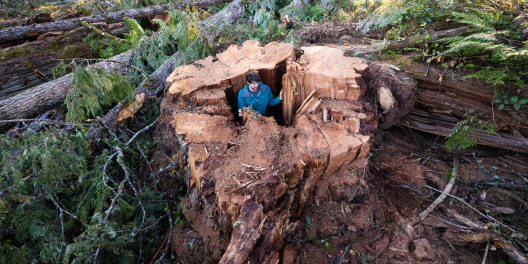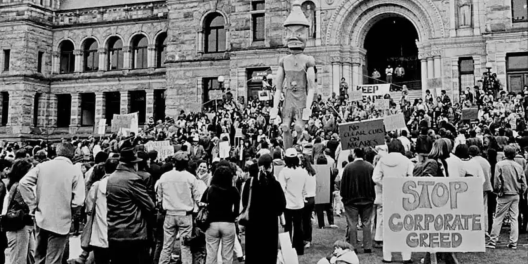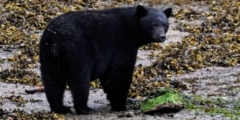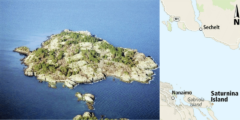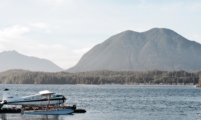Two of the most colourful characters from Vancouver Island’s coal mining past are Albert “Ginger” Goodwin and Matti Kurikka. In their own ways, both left lasting impacts on BC’s political landscape.
In the late 19th and early 20th century, Robert Dunsmuir’s coal mines attracted an ethnically diverse immigrant workforce. Among them was Ginger Goodwin. Fed up with working conditions in the mines, the Englishman sought safer working conditions and better pay, regardless of race and ethnicity. At the time, Asian miners earned half the wage of their Caucasian co-workers. Goodwin led strikes and served as a delegate to the BC Federation of Labour. Then, in 1916, he left Cumberland for Trail to work at the lead-zinc smelter.
Goodwin continued his labour organizing activities and ran unsuccessfully in the provincial election as a candidate for the Socialist Party of Canada. However, his pacifist views and opposition to the draft during World War I put him on the wrong side of government. After first being exempted from military duty for health reasons, the decision was reversed after he led smelter workers to strike for an eight-hour day. He returned to Cumberland to appeal his case but soon fled into the hills around Comox Lake with other war objectors.
In late July 1918, Goodwin was shot and killed by a government deputy. With no witnesses, the circumstances were disputed. But his killing sent ripples across Canada. It sparked a one-day general labour strike in Vancouver, the first in Canadian history, and was a dry-run for the Winnipeg general strike of 1919. Goodwin’s memory lives on. Every summer, labour reps and activists still gather to pay tribute at the tombstone of Ginger Goodwin in the Cumberland cemetery.
The story of Matti Kurikka and Sointula, a Finish settlement on Malcolm Island, is less known but no less interesting.
Finns were among the numerous immigrants who came to BC during the late 19th-century coal mining boom. A group of Finnish labourers dreamed of a better life. To help, they recruited Kurikka, a charismatic journalist and social activist, to come to Canada.
Kurikka arrived in Nanaimo in 1900 and helped the group found the Kalevan Kansa Colonization Company. A year later, after negotiating with the provincial government, they took ownership of Malcolm Island, 28,000 acres of rugged rock and temperate rainforest between northern Vancouver Island and the mainland. The first co-op members soon arrived to start clearing land and were joined in 1902 by a large group of families.
Strikingly handsome with a wave of thick hair and intense eyes, Kurikka was a man of progressive ideas. The settlers called their community Sointula, which means “place of harmony” in Finnish, and established an egalitarian ethic that was ahead of its time in Canada. Women received equal pay for equal work, free daycare and the right to vote. Under Kurikka’s leadership, there would be no police, no alcohol and no church in the community of loggers, fishers and farmers.
But life was tough.
In 1903, just two years into Malcolm Island’s utopian socialist experiment, a fire destroyed the community hall killing 11 people. Financial mismanagement and bad luck further crippled the cooperative, and by 1904, its idealistic leader had returned to Finland with half of the community members. The Kalevan Kansa Cooperative declared bankruptcy the following year, and Malcolm Island was returned to the BC government. However, the settlers who remained kept their private home lots and continued to forge a life along BC’s lonely coast.
Despite the hard times, some of the progressive ideals that took root in the early days live on today. For example, the Sointula Co-operative Store Association, formed in 1909, remains the longest-running cooperative in BC.
Much later in the 1980s, Sointula residents reacted against the wholesale clearcutting of Malcolm Island by the logging company Interfor. Malcolm Islanders began discussing the concept of a community forest before the province had even created such a thing in its forest tenure system. They were ahead of their time. Ironically, though Malcolm Islanders managed to regain some control of forest management, years later, they failed in their bid to acquire a community forest license when the province finally made such tenures possible.
Ginger Goodwin and Matti Kurikka were two very different leaders drawn to northern Vancouver Island and bound by social ideals. One helped change labour laws, and the other planted the seeds of cooperative ownership. Nevertheless, both left a lasting impact on Canadian society.

